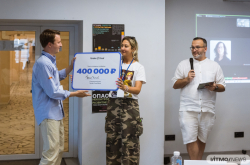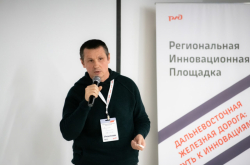-
What is a product?
-
Why do you need it?
-
What is a value proposition?
-
How do you formulate your value proposition?
What is a product?
The market is overflowing with products. By this word we usually mean either goods purchased in online and offline stores or services, such as a haircut. However, a product can also mean a set of tools that satisfy consumer needs. For example, Amazon – a marketplace that sells goods to customers and serves sellers by packing and delivering orders, as well as acting like a one-stop shop for a variety of products and services.
Why do you need it?
Each product should fulfill someone’s needs and solve problems of its target audience, which can be represented by anybody, even the product’s creator. For example, the first CRM (customer relations management) system was invented to be used in one particular company and help manage interactions with clients and business processes. However, such software was so sought-after that other companies began to use it as well. A product can be also created to solve problems of several target audiences: for instance, classified ad websites like Avito or Craigslist help customers look for goods and provide sellers with clients.
If it’s not clear whose problems the product solves and how, it won’t sell well. It’s not enough to offer your goods for sale – the seller should also be able to find customers and explain why their product is useful.

Credit: photogenica.ru
What is a value proposition?
The value proposition are the benefits you promise to your potential clients so that they would choose your product. Typically, it can be formulated by answering questions like: how will the product satisfy the customer’s needs? What benefits will they gain from purchasing it? Why is your product better than others?
Each group of consumers has its own interests and problems, so your product should acquire several unique value propositions. For example, IKEA manufactures and sells home goods used by many people. They reach out to each category of their target audience using ads. For example, some are focused on struggling young parents. For them, the message is: “We know how much it means for you to create a calm atmosphere in your home.” Here’s another ad, focused on a father who lacks personal space in a big family, that ends with the words “United doesn’t mean crowded.”
However, don’t confuse the value proposition with the unique selling proposition. In the first case, your potential clients should learn about immaterial value and advantages and in the second – about specific benefits and quality of the products. For example, the popular Russian marketplace Wildberries formulates its value proposition as: “The place where sellers and consumers meet,” while their unique selling proposition is fast delivery, the opportunity to return your purchases after delivery, and low prices.
How do you formulate your value proposition?
Segmentize your target audience. It’s not enough to choose between B2C and B2B. You should also know the basic info about your potential clients: where they live, how old they are, what their relationship and financial status is, what interests them, what problems they have, etc. You can learn all that by analyzing the clients of your competitors and studies by marketing companies, holding surveys, putting yourself in the client’s shoes, and communicating with them. You can also apply Mark Sherrington’s 5W method by answering the following questions: what kind of a product is that? Who purchases it? Where do they do that? When do they do that? Why do they do that?
Do your own studies. You can conduct different types of interviews with representatives of your target audience. The problem interview helps find out what bothers clients and receive comprehensive answers about the problems they face and how urgent these problems are, if they use other products to solve them, and what the disadvantages of existing solutions are. Then, you do the solution interview, which helps formulate the unique selling propositions and see if the client would like to choose your product and at what price – or, if they don’t, what would help them change their mind. The in-depth interview helps learn about the client’s experience of interacting with products and formulate the value propositions. For example, you can ask when the last time they’ve traveled by plane was, how they purchased the tickets, what problems occurred, and how they tried to solve them.

Credit: photogenica.ru
Put all the info together. You can use Osterwalder’s template, also known as Business Model Canvas. There are two blocks – one for the description of your product and another for the description of consumers. In the first, you list what kind of a product you offer, what its qualities are, how it helps solve the customer’s problems, and what benefits they receive. In the second block, you talk about potential clients: their tasks, problems, and desired benefits. As a result, you should formulate a text using the template: “We’re the … company. We help our target audience do … in order to solve the … problem using …”
For example: “We are the company that created the ready-made food delivery service Tasty and Healthy. We allow people with lactose intolerance to buy delicious ready-to-eat meals so they wouldn’t have to waste time looking for safe foods and making them at home. To do this, we have developed an app in which you can order the delivery of lactose-free meals at any time and subscribe to the delivery for any period. We also offer a wider range of lactose-free products at lower prices, such as tofu and lactose-free proteins.”
Entrepreneurial Competence Training is a part of the project Platform of University Technology Entrepreneurship. As part of it, educational events take place in six Russian cities, where students can learn more about creating a technological startup, evaluate the market, build a business model, attract an investor, form a team, and many more. Among the speakers are entrepreneurs, soft skills lecturers, psychologists, specialists in accounting, taxation, and management of small businesses, as well as business consultants and other specialists. The training sessions are conducted by Russian Venture Company, ITMO University, and the startup studio Open Innovations (Otkrytye innovacii).





